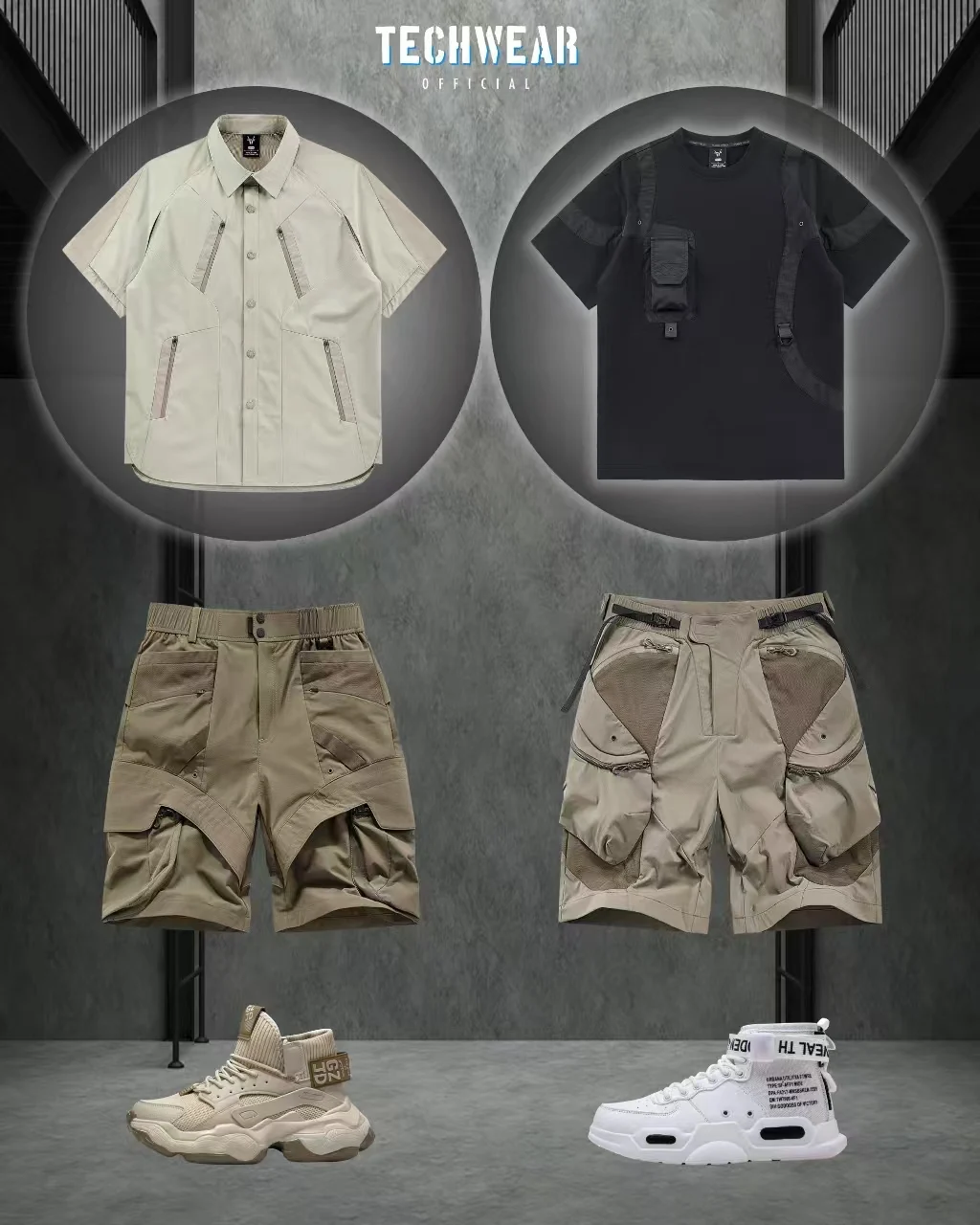You’ve seen them everywhere—at a summer BBQ, on your friend at the skatepark, scrolling past on TikTok, or folded up just right in the thrift store’s men’s denim section. Baggy jorts—those roomy, knee-length denim shorts—aren’t just a throwback to 2006 or part of a Y2K fashion revival. They’re a symbol of something deeper, something that speaks to how we dress for comfort, practicality, and identity.
To understand how baggy jorts earned their place in fashion’s hall of fame (and in your bottom drawer), you have to look back. Not just to the early 2000s or the skateboard revolution of the ’90s, but further—to job sites, factories, garages, and farms, where denim wasn’t about style but survival.
Let’s rewind.
Before baggy jorts were a fashion statement, they were just… useful. Think about sweltering summers on construction sites or long, physically demanding days in a mechanic’s garage. Jeans were tough, but heavy. Sometimes too hot. Workers needed something breathable and flexible. The logical solution? Cut the pants into shorts—or buy them already short and made to handle the same bruises of everyday labor. Thus, the jort was born from necessity. Not fashion. Not flash. Just good old-fashioned function.
The earliest baggy jorts weren’t your Instagram-friendly, acid-washed festival wear—they were stitched to survive. Denim could endure what khakis couldn’t: oil stains, concrete burns, stray nails, you name it. Workwear brands like Carhartt, Dickies, and Wrangler knew this well. They made their shorts looser to allow for better motion—bending at the knees, climbing ladders, crouching near machinery—and tougher, reinforced where wear-and-tear was expected. Add reinforced pockets and hammer loops? Suddenly you’ve got a carpenter short: the grandparent of today’s baggy jort, including the modern twist we now see in eco-friendly baggy denim jorts that balance rugged heritage with sustainable materials and production methods.
And here’s the thing—you don’t have to be a carpenter to appreciate that kind of function. You’ve probably felt the tactile comfort of a wide-leg short, the way it lets your skin breathe. You’ve probably slipped your phone into an oversized pocket and thought, “Why don’t all pants have this?” Workwear didn’t just create a trend. It gave people a better way to move through the world.
Now fast forward to the ‘80s and ‘90s. Workwear starts to leave the job site and enters urban neighborhoods, skate parks, and underground music scenes. Kids on skateboards needed clothes they could fall in and get back up with. Baggy clothing didn’t just become cool—it became survival gear. If you skated, if you danced hip-hop, if you spent hours in the sun shooting your own music video—you knew the meaning of freedom and airflow. And so those sturdy, oversized shorts your uncle wore to fix engines? They found new life carving concrete steps and spinning behind a DJ booth.
The transition from blue-collar essential to streetwear staple was subtle at first. But if you were there, you felt it. JNCO was making wild, billboard-wide denim. Tupac and Nas were wearing oversized denim shorts with Timberland boots. Tony Hawk was soaring in cargo jorts that hung like sails. Fashion was moving away from polished prep and tailored fits. It was baggy, rugged, and real. Just like the workwear that inspired it.
And maybe you didn’t notice it right away. Maybe you were too young. Or maybe, like most people, you didn’t realize that what you were wearing echoed generations of laborers who valued resilience over runway trends. That this piece of clothing you threw on without much thought actually came with a legacy.
There’s a kind of poetry in that, isn’t there? Something made for hard work ends up being embraced by people chasing freedom and expression.
If you’ve ever slipped into a pair of baggy jorts and felt immediate ease—less restriction, more possibility—it’s not just in your head. The generous silhouette gives you space to move, space to breathe, and maybe even space to be a bit more yourself. They don’t tuck you in or slim you down. They ask nothing of you. Furthermore, they’re built for you to show up just as you are.
Today, influencers and fashion houses are once again celebrating baggy jorts, reimagining them in every form—from distressed and oversized to structured and stylish. But the truth is, the real appeal never went away. The people never stopped loving comfort. Functionality has always been in style—you just needed the right lens to see it.
You can still find remnants of that workwear legacy in most pairs of jorts today: durable seams, practical pockets, faded washes like you’ve been wearing them for years. And even if your jorts come from a trendy modern retailer instead of a hardware store, they carry threads of the same DNA.
Maybe that’s why it feels good to put them on. Why they’re the first thing you grab when the weather turns warm and you don’t want to think too hard about your outfit. They’re forgiving. Uncomplicated. Built for work—and for play, protest, art, skate, dance, nap, adventure, or just a long walk with music in your ears.
In an age of fast fashion, aesthetic pressure, and endless scrolling, there’s something honest about baggy jorts. They say, “I didn’t try too hard, and that’s the point.” They meet you at the intersection of form and function, at the crossroads of hard labor and chilled-out living.
So next time you see a pair in your closet—or at a thrift shop, or on someone walking by—you might look at them a little differently. Not just as a fashion trend, but as a quiet inheritance from the workers who came before you. People who didn’t care about looking “cool.” They needed their clothes to do a job. Ironically, that no-nonsense practicality became the epitome of cool.
And hey, if all of that is too much to think about while getting dressed—that’s okay too. Because for all their history and cultural evolution, baggy jorts are, above all, meant to be lived in. Thrown on. Worn out. Patched up. Worn again.
That’s the beauty of them. And maybe, deep down, that’s why you love them too.

Lexy Summer is a talented writer with a deep passion for the art of language and storytelling. With a background in editing and content creation, Lexy has honed her skills in crafting clear, engaging, and grammatically flawless writing.



